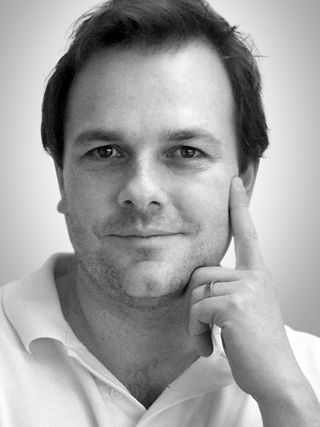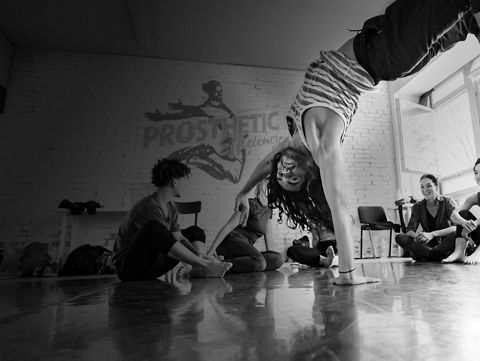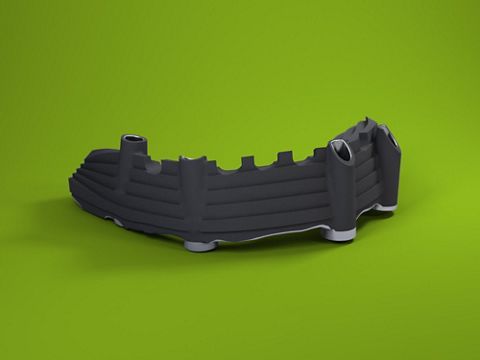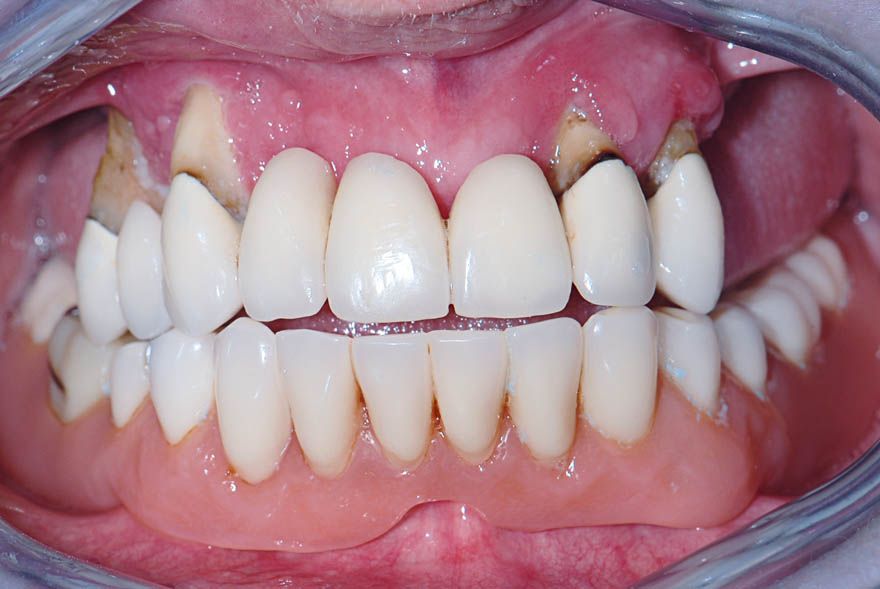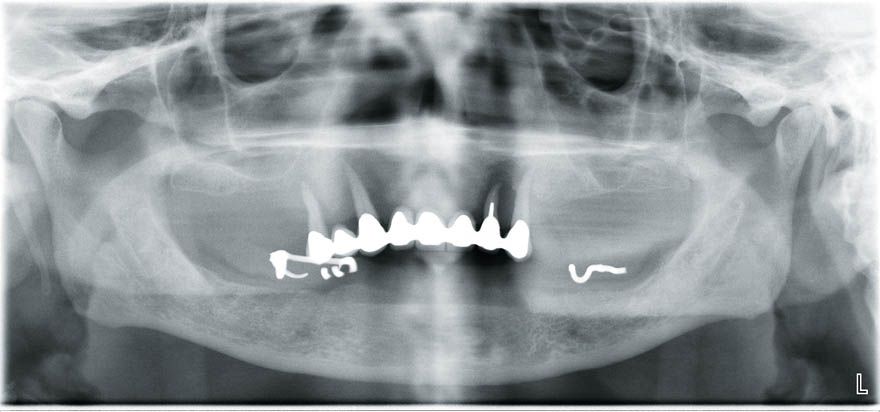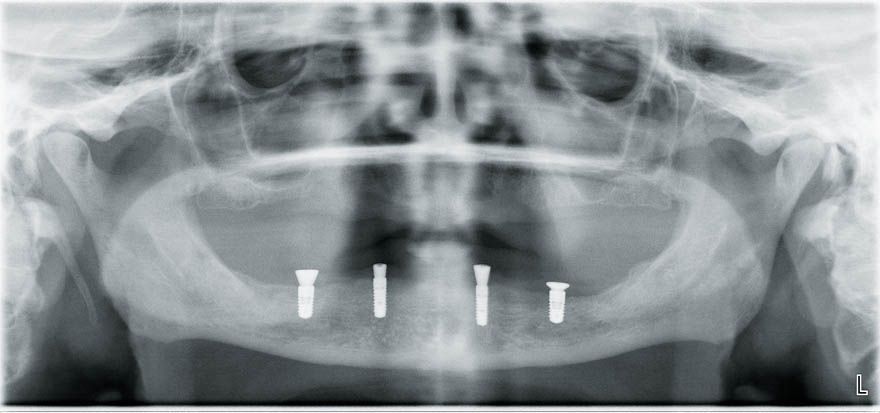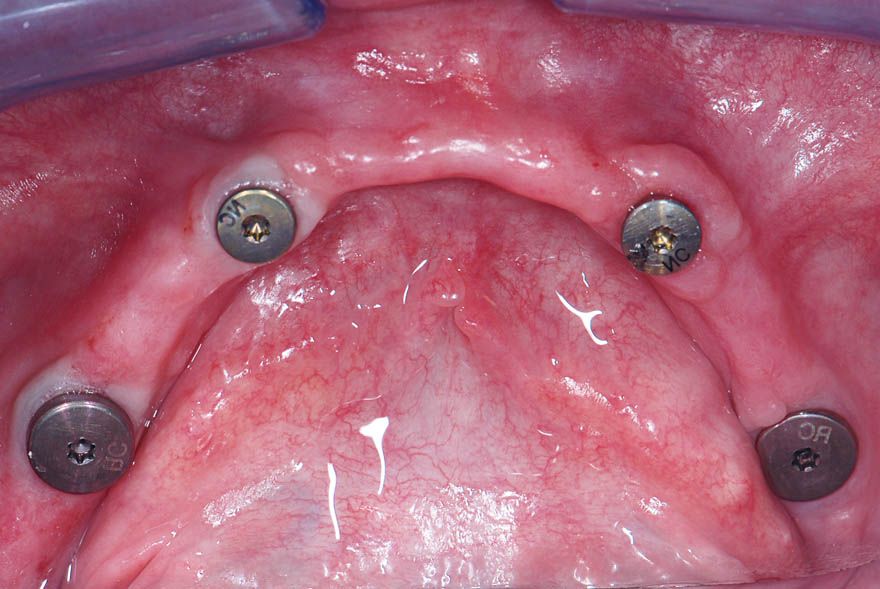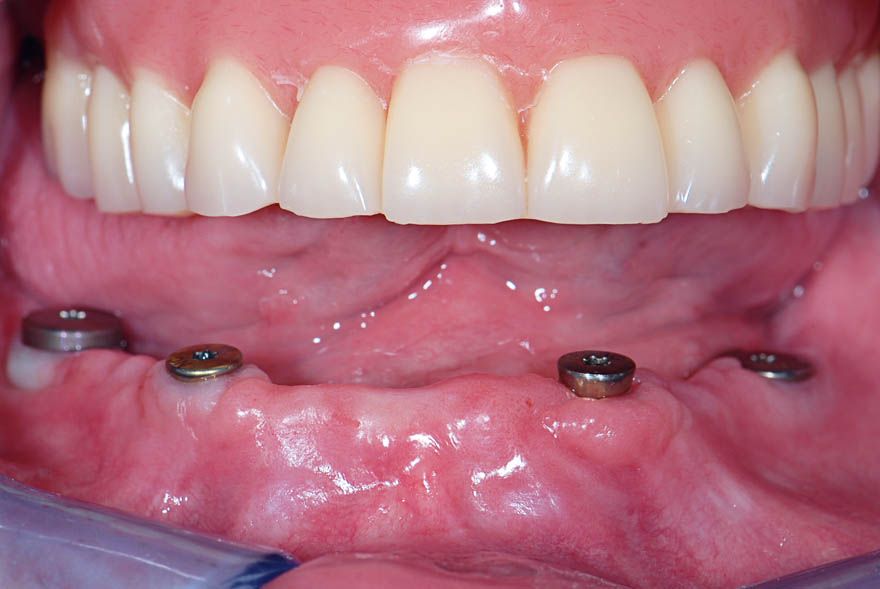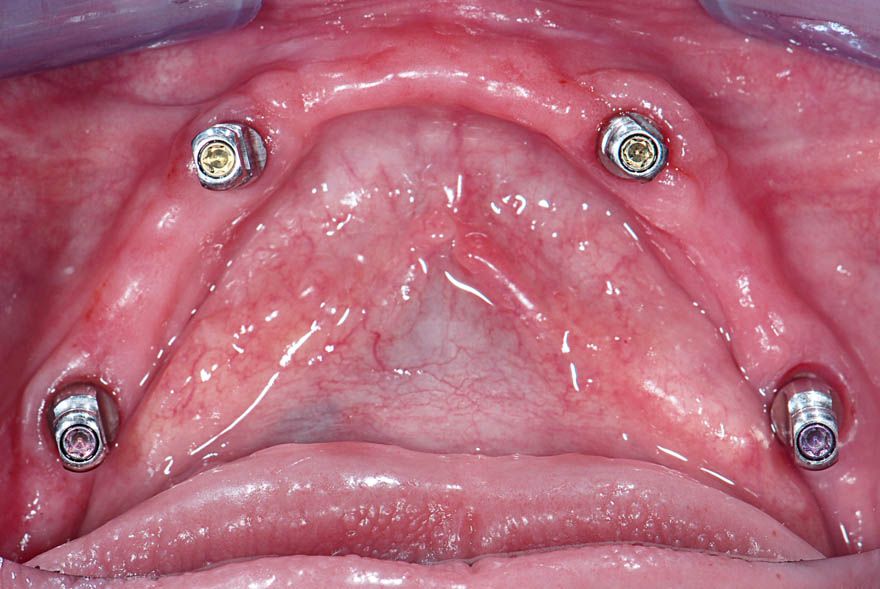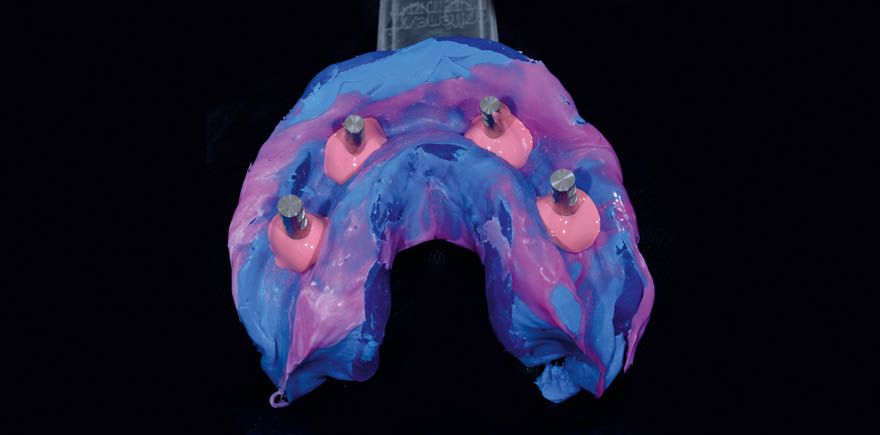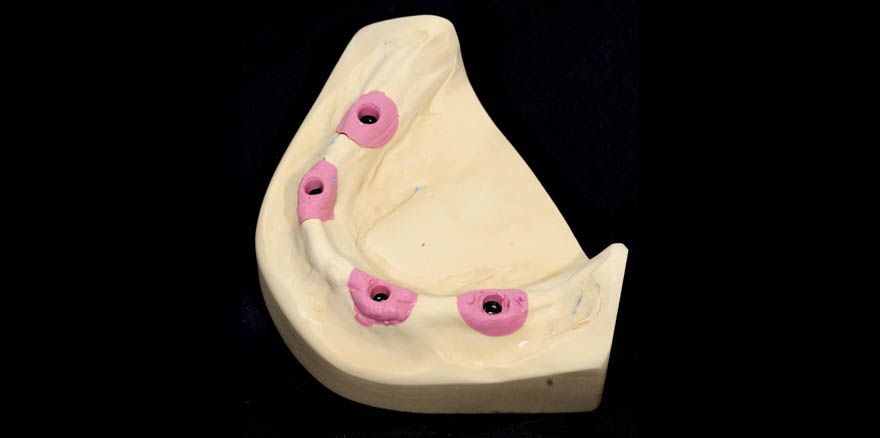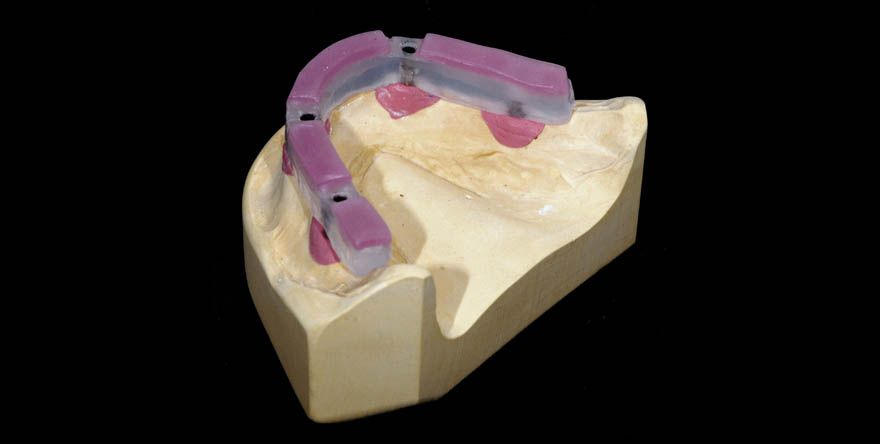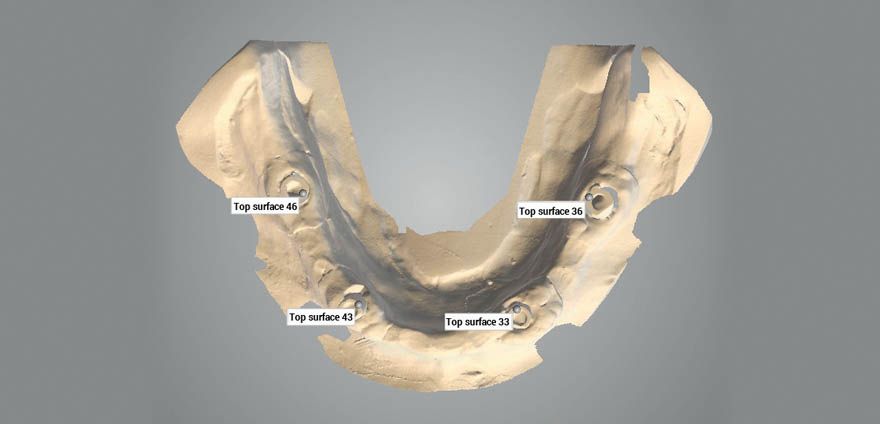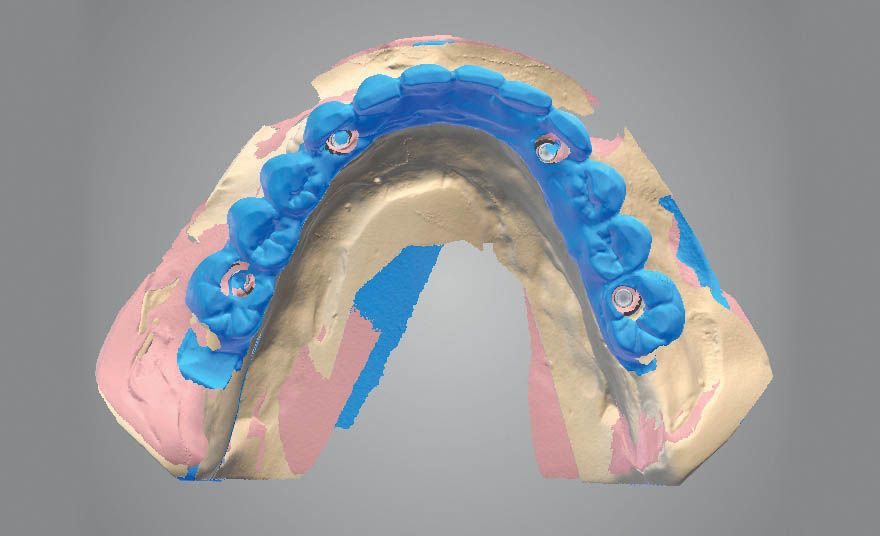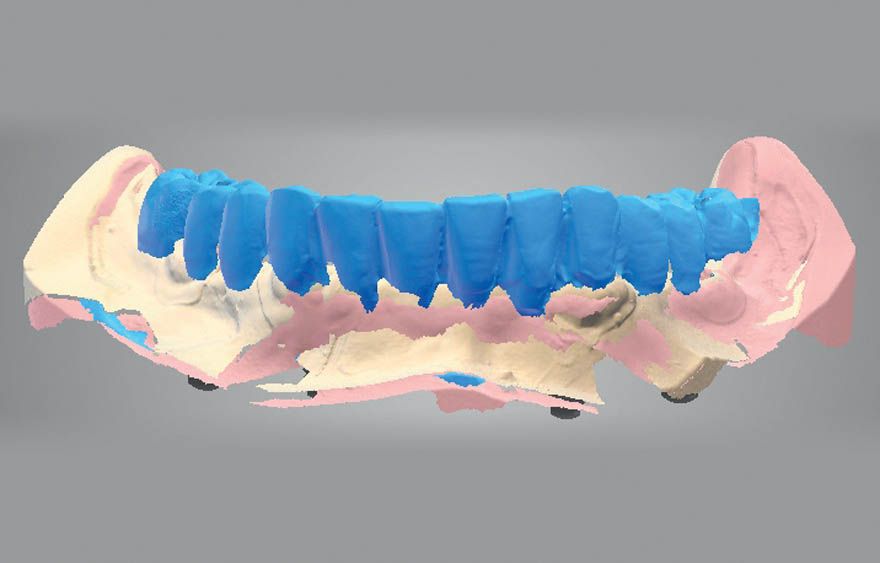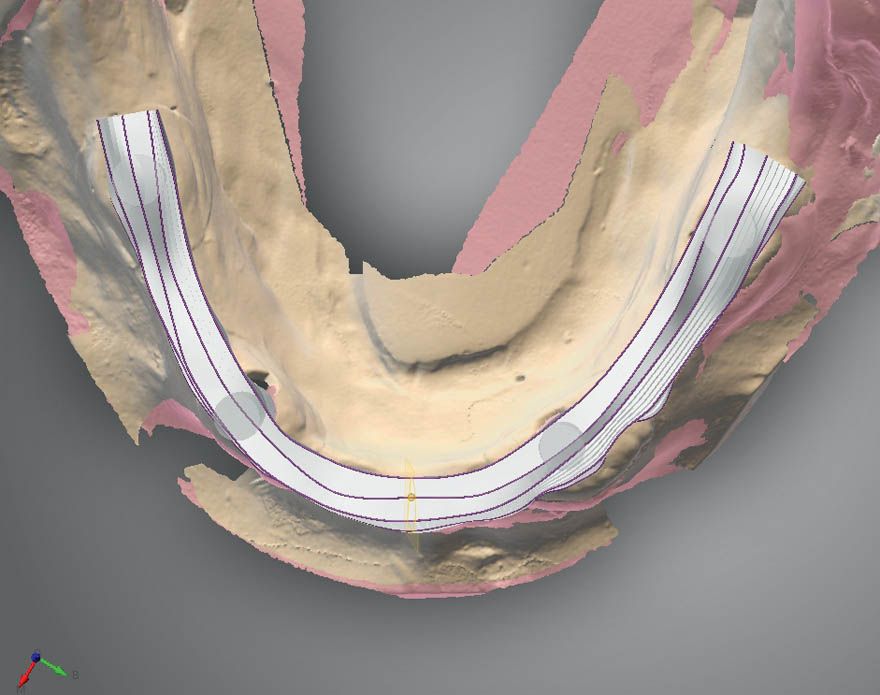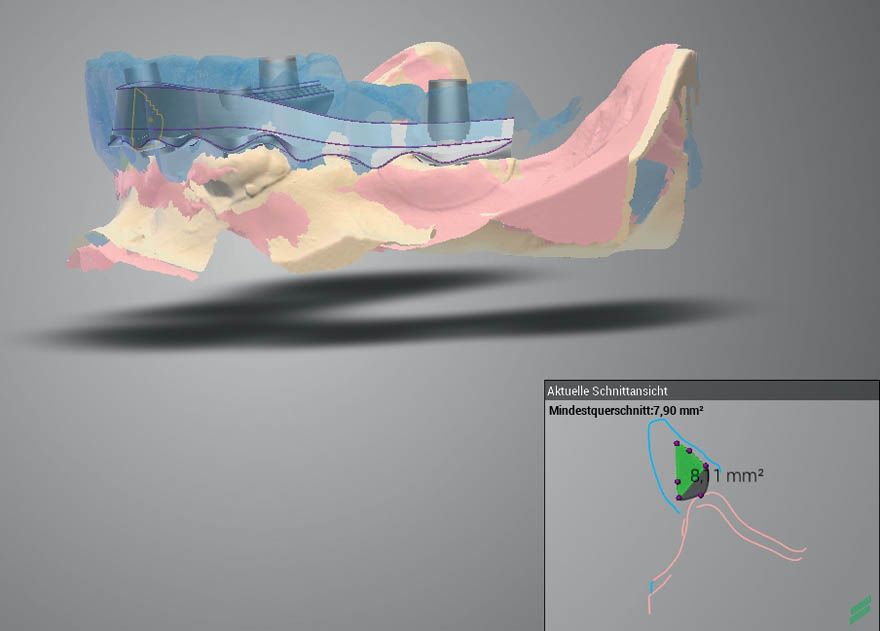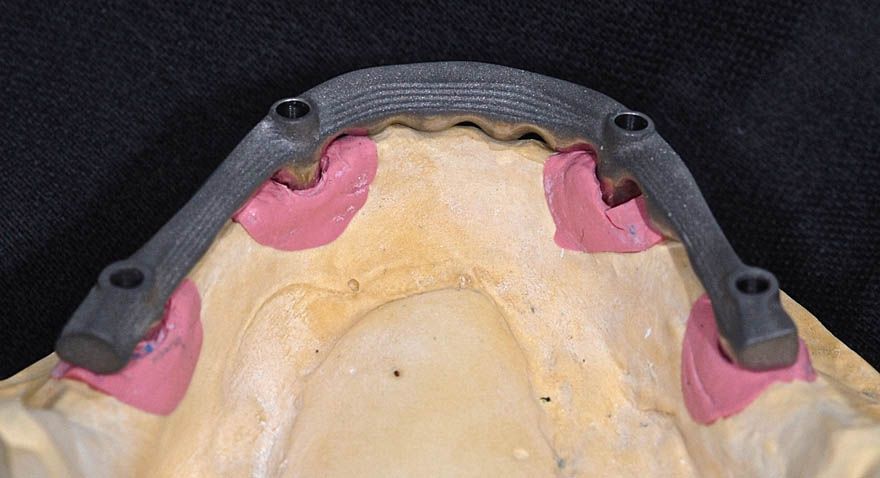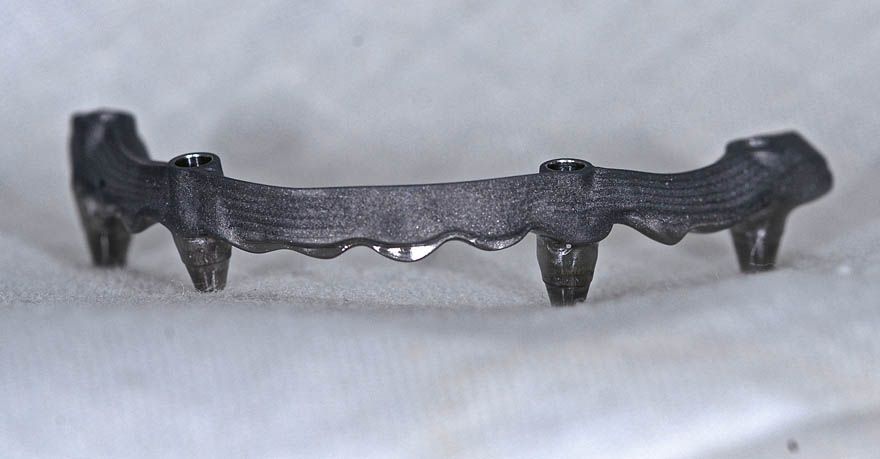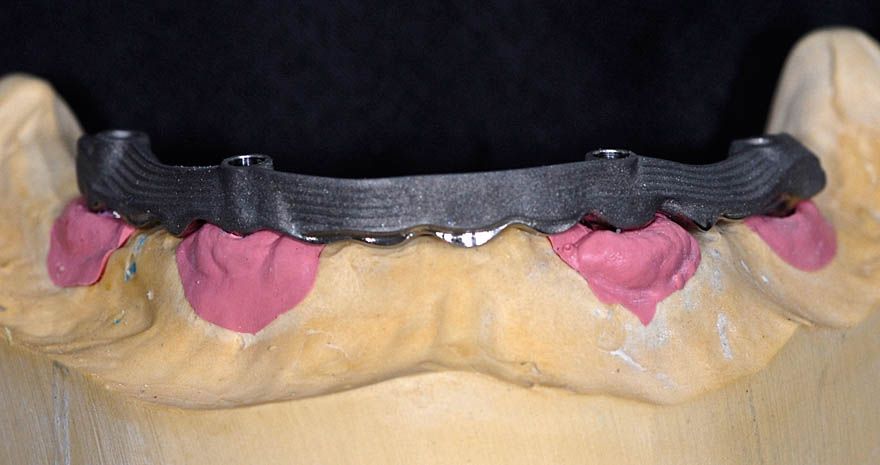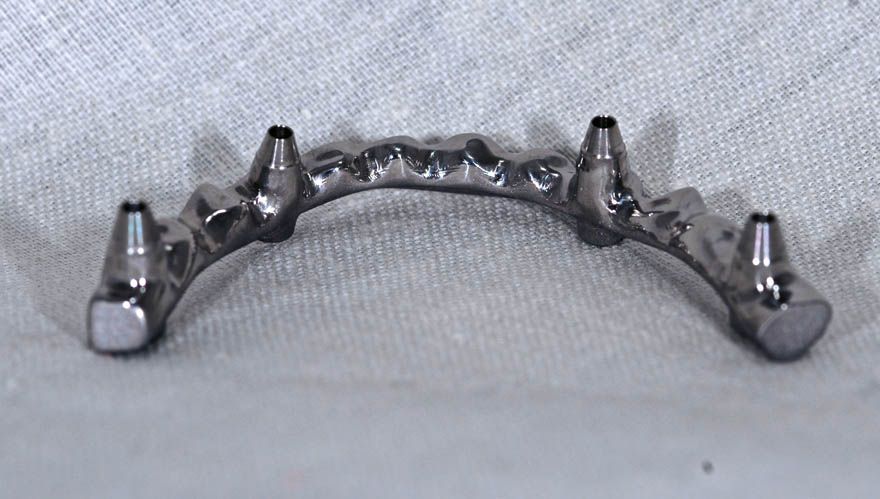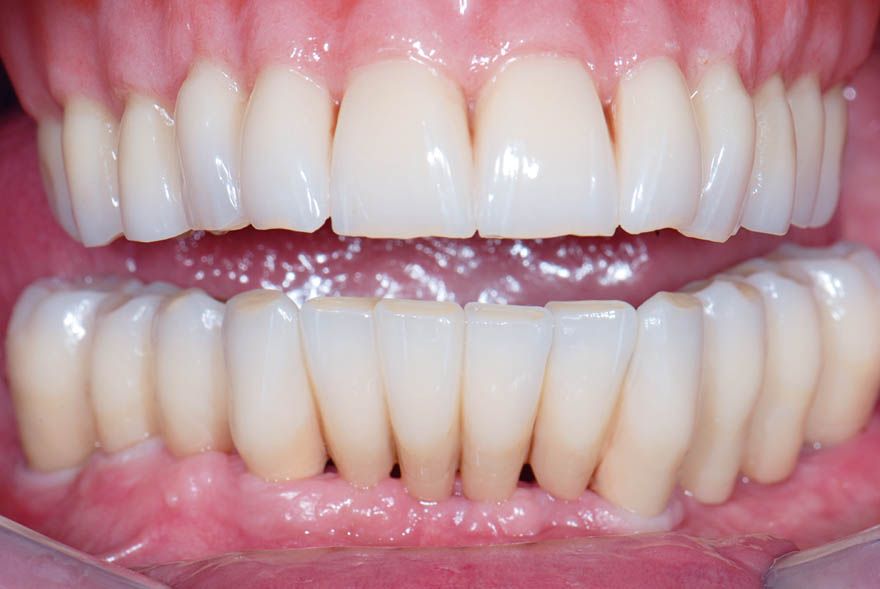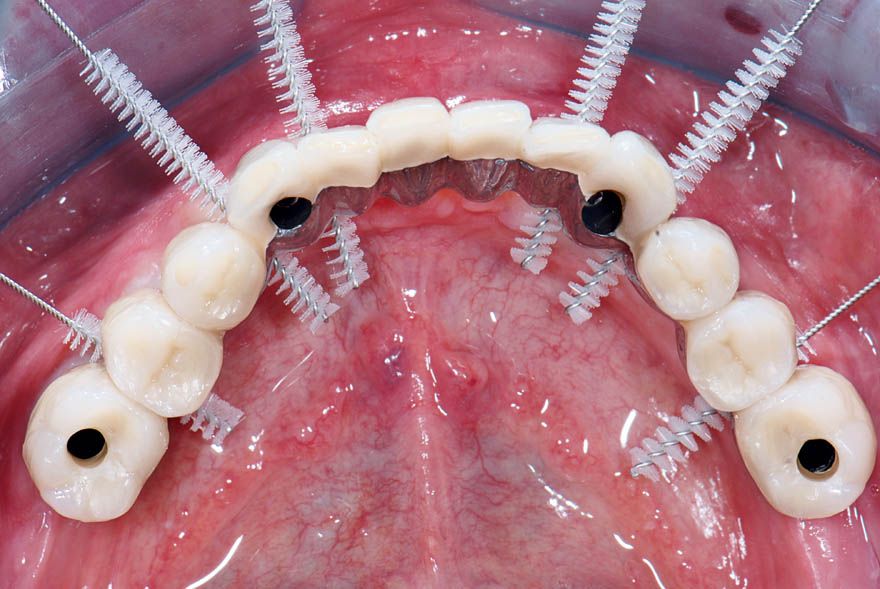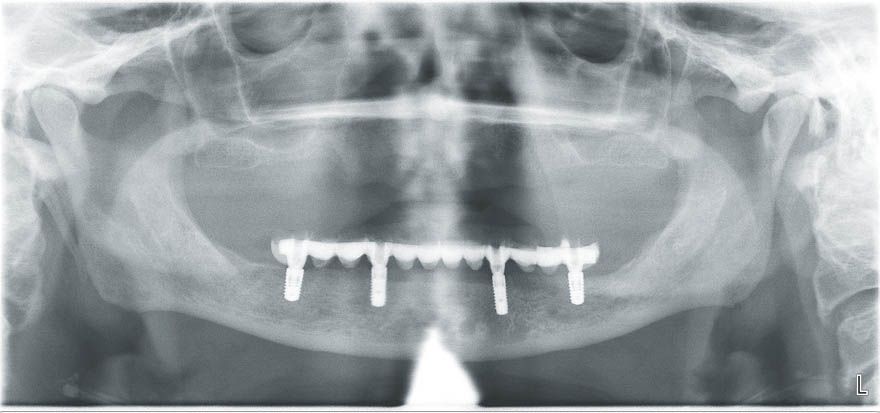Restoring chewing function, comfort, and self-confidence
A clinical case report by Fidel Ruggia and René Wöhrle, Switzerland
The Straumann® CARES® Screw-retained Bridge and Bar portfolio is continuously expanding and offers a broad choice of CAD/CAM prosthetics for fixed and removable restorations. With the new Straumann® CARES® Fixed Bars, the need for cost-effective fixed prosthetic solutions is addressed.
Initial situation
Our patient was a 55-year-old female who wanted her impaired chewing function to be restored. Four years ago, the teeth in her mandible were extracted and replaced with a full prosthesis due to advancing periodontitis (Fig. 1). The teeth in the maxilla also fell victim (Fig. 2) and had to be removed. The patient was otherwise in good health. In addition to restoring chewing function, she wanted in particular to overcome the social handicap associated with the removable prosthesis.
Treatment plan and surgical procedure
The patient’s desire to replace the teeth with permanent reconstructions was to be met by implants in the maxilla and mandible as well as fixed restorations. The bone volume and quality in the mandible were sufficient for successful implant therapy (Fig. 3). Four implants (Straumann® Bone Level ∅ 4.1 mm, length 8 mm, position 36 and 46; Straumann® Bone Level ∅ 3.3 mm, length 12 mm, position 33 and 43) (Figs. 4, 5) were placed.
Prosthetic approach
The dental impression (Fig. 6) was mounted with implant analogues and prepared with a gingival mask made of scannable material (Fig. 7). The master cast was then made from class IV plaster (Fig. 8). For the purpose of bite registration and verification of the implant position, temporary abutments were blocked with composite on the cast (Fig. 9). This ensured that the position of the implants and the jaw-to-jaw relation could be checked in one work step. Care was taken to ensure that the composite did not hamper checking of the position – particularly for the emergence profile. After mounting the cast, the initial tooth set-up was carried out, using the composite bar as a framework. An artificial gingiva was not used in the mandible in favor of better oral hygiene. The initial esthetic intraoral try-on was performed. Tooth position, emergence profile, relation of tooth length and occlusal plane, color, and of course the esthetics were checked. After checking all of these factors and the patient’s feedback, the process moved to CAD software for planning of the bar. The work was digitized using the Straumann cs2 scanner (Figs. 10 – 12). The restoration was then designed in the Straumann® CARES® 9.0 software. We opted for the Straumann® CARES® Advanced Fixed Bar with basal polished metal surface. This has lower plaque accumulation compared with acrylic veneering. It was possible to edit the bar (Fig. 13), individual segments, and bar copings directly in edit mode. The different tools were very easy and intuitive to use, e.g. an eye was kept on the necessary cross-section thickness using the 2D cross-section window (Fig. 14). Using the mock-up scan (Fig. 14), the full shape of the bar was adapted to the set-up. The bar geometry was simple to edit in the segment editing and the interdental spaces were adjusted to the mock-up. The shape and height of the individual bar copings were defined to avoid space problems. After designing, the bar data were sent directly to the Straumann milling center in Leipzig, Germany. The cast was forwarded by courier to ensure a perfect fit. The sandblasted bar was returned after three to five days, ready for further processing (Figs. 15 – 17). The bar was then treated with silane (for adhesion). The opaque coating was then applied and set. The veneers were degreased, sandblasted, and repositioned in the previously made transparent index. The index was secured to the cast over the bar; the luting composite was injected and cured with light. crea.lign, a light-curing composite which achieves a homogeneous, dense surface and thus inhibits plaque formation, was used to finish the CARES® Advanced Fixed Bar (Fig. 18). From experience, use of this material reduces the risk of the veneers flaking in the long term. After curing, the occlusion was ground and the bridge was finished and highly polished as usual.
Conclusion
After completion of treatment, the patient confirmed that her wishes had been met in full. Chewing function, comfort, and self-confidence had been fully restored. From a financial point of view, this reconstruction did not cost more than manufacturing a conventional removable prosthesis with bar construction. By contrast, the follow-up costs were reduced to a minimum. A fixed reconstruction has had a psychological benefit for this patient, which would not be possible with a removable solution. We therefore firmly believe that this solution is a valid therapeutic option for the treatment of edentulous jaws. Nowadays, patients want solutions for an unrestricted quality of life, combining lasting functionality with attractive smiles. Implant-borne restorations (Figs. 19 – 21) can offer patients precisely this, as this case demonstrates.
We would like to thank the ESTETIKER laboratory in Lugano, Switzerland, for its collaboration.
crea.lign is a trademark of Bredent GmbH & Co. KG, Senden, Germany.
Availability of products described in this article in your country: please contact your local official Straumann representative for further information.
